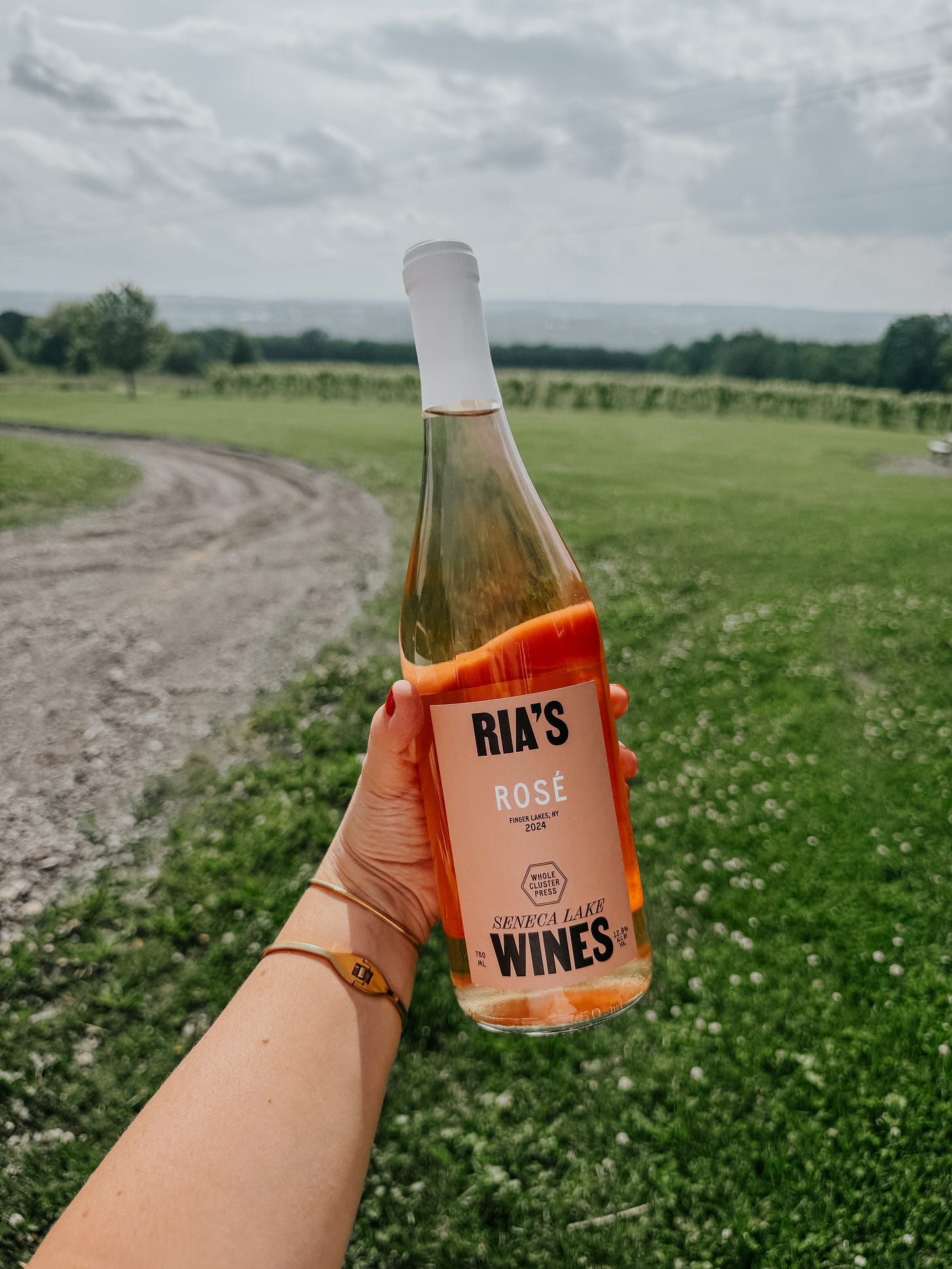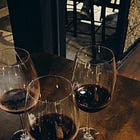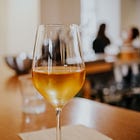How To Tell If a Wine Is Good
You have more of a discerning palate than you think, I promise.
I’m currently on a trip in New York wine country (the Finger Lakes!) and like many popular wine regions across the globe, it isn’t uncommon for wine lists at local restaurants to be dominated by the local wine. There’s at least some kind of expectation that the wines on the list will be good, and the service to know the wines they are serving. Or maybe having that expectation is where I ultimately went wrong.
One of the restaurants close to our Airbnb was having a pasta night this week—fresh homemade pasta with a $26 bottle of wine. I should have known…but I’m a sucker for a deal, and I went in with the assumption that the wine can’t be that bad. I mean, we’re in wine country!
I asked the server what the red blend was on the menu, and he said it was dry and included Lemberger (the local name for Blaufränkisch, a favorite of mine). I said yes, expecting something dry, full-bodied, maybe smooth from some oak aging. Instead, I was served a sugar bomb.
A quick search online for the wine’s tech sheet, and I found out not only did it not have Lemberger (sigh), the wine also had 13 grams of residual sugar (bigger sigh). When I tried to talk to the server about it, he doubled down on his theory that A) the wine is dry, and B) if I hated it so much, I could order another $26 bottle. And pay for it, of course.
I let it go at that point, because even after I pointed out the residual sugar, it wasn’t worth the argument—or causing a scene. So my husband (bless his soul) finished a glass while I managed to swallow a few sips, and we left a pretty much full bottle of wine on the table.
On our drive home, after my husband reassured me that it was only $26 wasted and it wasn’t a big deal (and maybe to never order the $26 bottle of wine again), he asked me, “what makes for a good glass of wine?”
I blabbed on to him a bit, trying my best to explain it to him, but my thoughts weren’t really succinct. So here’s my attempt at making them a little more coherent.
Pay attention to the wine’s balance.
Not all wine is created equal. Even if you think “wine is just wine” and you’ll “drink whatever,” I promise you, you still have enough of a discerning palate to taste when something is bad or good. If you’re reading a newsletter about wine, then I’m pretty confident writing that my followers have enough sense to know when something tastes too sweet, too sour, too bitter, and so on.
A good glass of wine is all about balance. The best way to describe it is to imagine a tipping scale. On one side you have the structure of the wine. The structure is going to come from the acidity and the tannins. On the other side you have your alcohol and sugar, which both create the body of the wine. (Higher alcohol and more residual sugar result in a bigger mouth feel.)
When looking for a good glass of wine, you want the scale to be balanced. You don’t want a wine that is too acidic (sour) or too tannic (drying out your mouth). And you don’t want something with an overpowering amount of alcohol without any of the structure (makes the wine taste flabby) or residual sugar (coats your mouth and overpowers the taste).
This is why winemakers play around with blending grapes to get that perfect balance. For example, Merlot tends to ripen quickly, and when a grape ripens it produces lots of sugar, which results in a higher percentage of alcohol after fermentation. This is why single-varietal Merlots seem soft and sweet—less acid, less tannins, more alcohol which enhances the perception of sweetness. This is also why it balances well with Cabernet Franc (higher in acid, lighter bodied) and Cabernet Sauvignon (medium-bodied, good tannins). They are called “noble” for a reason—the balance of the three is near perfect.
Keep in mind that taste preferences also matter. Some people enjoy a wine higher in alcohol or with more residual sugar, and some people (like myself) prefer wines with a little more structure; lots of acidity, good tannins, lower alcohol, powerful natural fruit flavor.
But when it comes to tasting a wine and evaluating if it’s good, these are the things to keep in mind. Does the alcohol or sugar overpower the acidity and tannins, making it taste flabby? Is the wine so acidic that it puckers your mouth and there isn’t that touch of sweetness from the alcohol? Are the tannins so drying that you feel like you just licked chalk? It’s all about practice.
Here are some good questions to ask the next time you taste a wine:
Acidity: Does the wine make your mouth water? Acidity is good, but if that sour taste makes your mouth pucker and that’s all you taste, it’s too much.
Tannins: Does your mouth dry out? Is it a dryness in the center of your tongue (fruit tannins) or all around your mouth (oak tannins)? Is it a balanced amount, or too much?
Alcohol: Does the wine burn a bit in the back of the throat? Is it too much? Is that all you’re getting from the wine, instead of having other taste like acidity, tannins, and fruit?
Fruit: Are you getting that fruit flavor? Red fruits, black fruits, stone fruits, citrus? Flowers? Herbs?
Sugar: Does the wine coat your mouth? A little is good (sweet wine can be delicious when that’s the end goal) but if it’s not balanced, the sugar can overpower everything else.
So next time you think the $26 bottle of wine deal is a good idea, well, maybe don’t. 🙃
Wine of the week
Let’s talk about a wine that had great balanced structure—the perfect crispy rosé for summer. It’s light, not too acidic, not too alcoholic. The balance helps to bring out those delicate fruit aromas, and it was all-too-easy to finish a glass. This is Ria’s Wine 2024 Rosé, made with a four-way blend of Merlot, Cabernet Sauvignon, Cabernet Franc, and Blaufränkisch. This is from the Finger Lakes, obviously, on the right side of Seneca Lake in Hector, New York.
Tasting notes:
Appearance: Blush pink, pale intensity, clear and bright
Nose: Clean, light red fruits like fresh raspberries and strawberries, flinty, stony, mineral
Palate: High acidity, light body, light alcohol, no evidence of oak, very long length
My conclusion: Fantastic. Really long flavor, perfect balance of light and fruity with the right amount of tart for rosé. The kind of wine you want to drink all summer long.







